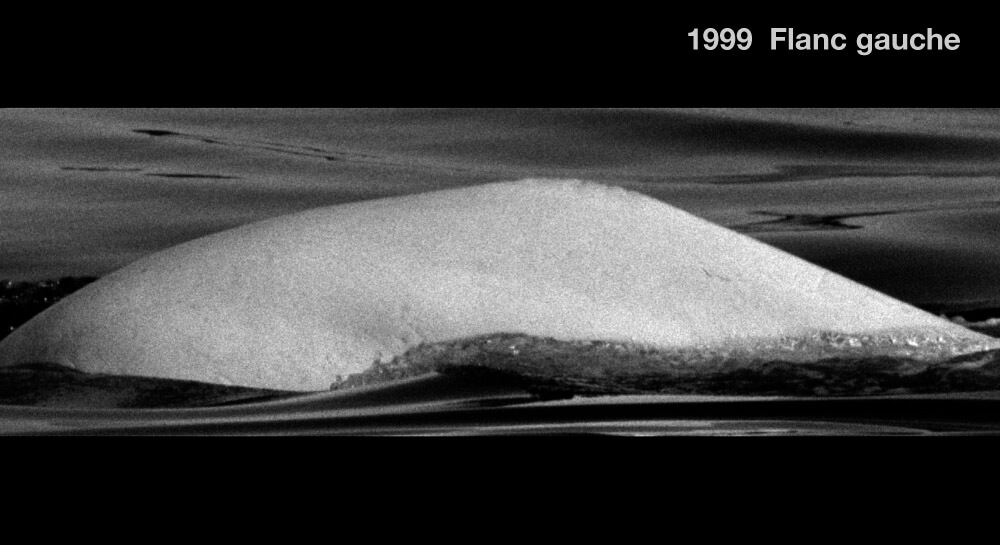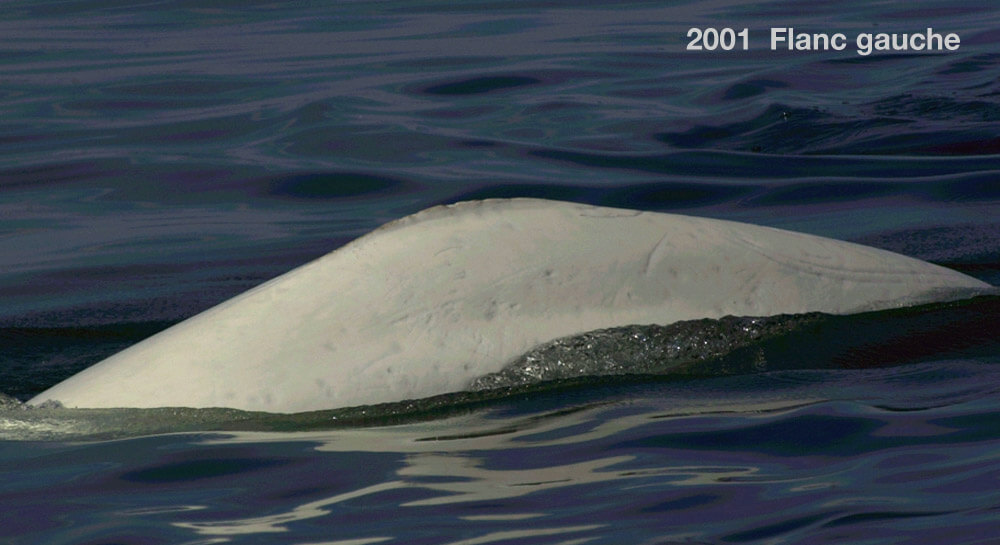Blue
Beluga


Adopted by Ella Issac
-
ID number
DL0992
-
Sex
Male
-
Year of birth
Around 1990
-
Known Since
1996
Distinctive traits
Faint markings in Blue’s dorsal crest are sufficient for a positive identification using just this body part. He also has several overlapping small, grey lines on his right flank in front of his crest.
Life history
The first time Blue was photographed was in 1996 when he was a young, grey beluga whale. He turned white around 2008. The colour change in beluga whales—their transition from grey to white—takes place between the ages of 12 to 16. Thus, Blue was born in the early 1990s.
Blue is often observed in large, very active herds in the downstream portion of their summer range, between Tadoussac and Les Escoumins, as well as in the Cacouna area. These herds are predominantly composed of young males, like Blue. Blue’s gender was confirmed through the genetic analysis of a biopsy sample, a small piece of skin that was taken from his back in 2001.
As males get older they tend to form stable groups. We know of three male networks, two of which travel the waters of the Saguenay Fjord and the head of the Laurentian Channel. The other, known as the “Downstream Boys”, also navigates the head of the Laurentian Channel, as well as the downstream portion of the Estuary. Although their territories overlap, individuals from one network rarely rub shoulders with males from the other networks. These associations become progressively more established at the adult stage and may play a role in their reproductive lives. We still do not yet know any of Blue’s faithful companions.
The next chapter in Blue’s story will teach us a lot about the evolution of beluga whale social lives. For example: what sector will he prefer as he gets older? Who will his lifelong companions be? Learning how beluga whales live will enable us to better protect them.
Observations history in the Estuary
Years in which the animal was not observed Years in which the animal was observed
Latest news
We cross paths with Blue off the coast of Rivière-du-Loup, in a large herd of around one hundred individuals. The animals are swimming alone or in very small groups and are heading upstream. Within the herd, we notice a few entirely white individuals, but 60% of them are gray or slightly gray. The herd is composed mostly of young belugas, grays and others that we refer to as “dirty white”, which are less than 20 years old. We also observe a newborn and a “bleuvet”, that is to say a second-year beluga. In the course of this encounter, we perform seven biopsies. A successful day!
We spot around 15 adult belugas in the Bergeronnes area. Other good-sized white belugas join the herd. Finally, we’re in the presence of around a hundred individuals, including Blue. Some belugas are in pairs, but most of the animals are on their own, moving around a small perimeter. Porpoises, a fin whale and a minke whale are also present in the area.
Towards midday, the weather turns for the worse : waves get bigger and fog rolls in. Just before leaving the herd, we recognize the male beluga Cherubin and witness some very dynamic behavior, such as tail slapping at the water’s surface.
We find Blue off Ile Rouge, right in the middle of the estuary, among a herd of 80 individuals. After 30 minutes of tracking, we attempt a biopsy on one of Blue’s herd. The dart hits the animal, but doesn’t go deep enough for us to get a sample of the skin and subcutaneous fat. No such luck! A biopsy was taken from Blue in 2001. It was this biopsy that revealed his gender.
Collecting a biopsy from a moving target in a boat is no mean feat. With practice, we’ve achieved a success rate of over 80%. The fact remains that when we miss a target, there’s a bit of disappointment on the boat. This is precious data, and opportunities don’t come along that often. We return to Tadoussac in the snow. It’s our last day at sea this year.
Sponsor
Ella Issac adopted Blue (2014).




